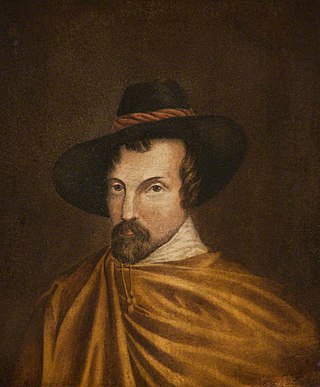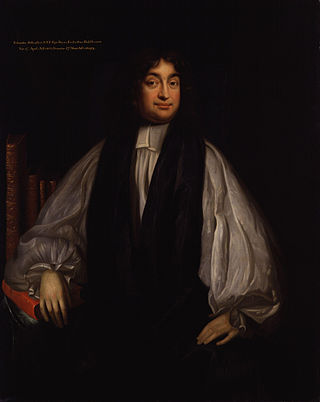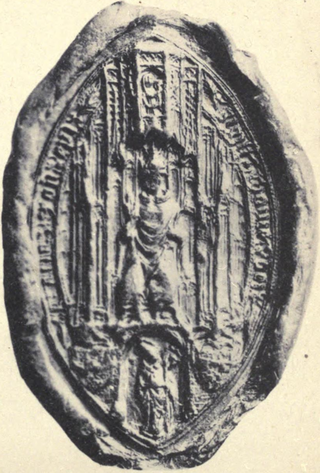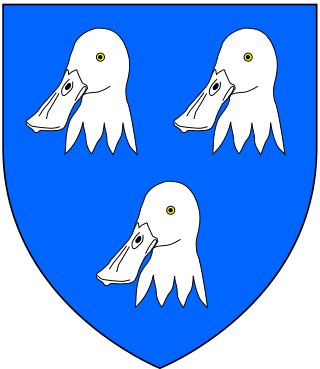Related Research Articles

Lancelot Andrewes was an English bishop and scholar, who held high positions in the Church of England during the reigns of Elizabeth I and James I. During the latter's reign, Andrewes served successively as Bishop of Chichester, of Ely, and of Winchester and oversaw the translation of the King James Version of the Bible. In the Church of England he is commemorated on 25 September with a lesser festival.

John Whitgift was the Archbishop of Canterbury from 1583 to his death. Noted for his hospitality, he was somewhat ostentatious in his habits, sometimes visiting Canterbury and other towns attended by a retinue of 800 horses. Whitgift's theological views were often controversial.

William Morgan was a Welsh Bishop of Llandaff and of St Asaph, and the translator of the first version of the whole Bible into Welsh from Greek and Hebrew.

Thomas Morton was an English churchman, bishop of several dioceses. Well-connected and in favour with James I, he was also a significant polemical writer against Roman Catholic views. He rose to become Bishop of Durham, but despite a record of sympathetic treatment of Puritans as a diocesan, and underlying Calvinist beliefs shown in the Gagg controversy, his royalism saw him descend into poverty under the Commonwealth.

Wulfstan was an English Benedictine monk who served as Bishop of Worcester from 1062 to 1095. He was the last surviving pre-Conquest bishop. Wulfstan is a saint in the Western Christian churches.

Sir William Brereton, 1st Baronet, was an English religious Independent, author, and landowner from Cheshire. He was Member of Parliament for Cheshire at various times between 1628 and 1653, and during the First English Civil War, commander of Parliamentarian forces in the North Midlands.

Edward Stillingfleet was an English Christian theologian and scholar. Considered an outstanding preacher as well as a strong polemical writer defending Anglicanism, Stillingfleet was known as "the beauty of holiness" for his good looks in the pulpit, and was called by John Hough "the ablest man of his time".
George Downame, otherwise known as George Downham, was an author of influential philosophical and religious works who served as Bishop of Derry during the early years of the Plantation of Ulster. He is said to have been a chaplain to both Elizabeth I and James I.

Thomas de Brantingham was an English clergyman who served as Lord Treasurer to Edward III and on two occasions to Richard II, and as bishop of Exeter from 1370 until his death. De Brantingham was a member of the Brantingham family of North East England.

John Overall (1559–1619) was the 38th bishop of the see of Norwich from 1618 until his death one year later. He had previously served as Bishop of Coventry and Lichfield, as Dean of St Paul's Cathedral from 1601, as Master of Catharine Hall from 1598, and as Regius Professor of Divinity at Cambridge University from 1596. He also served on the Court of High Commission and as a Translator of the King James Version of the Bible.

Edmund Lacey was a medieval Bishop of Hereford and Bishop of Exeter in England.
James Wedderburn, bishop of Dunblane, was the second son of John Wedderburn, a mariner and shipowner from Dundee, and Margaret Lindsay. James Wedderburn (1495?–1553), a poet and playwright and early Scottish proponent of Protestantism, was his grandfather.

The Diocese of Down and Dromore is a diocese of the Church of Ireland in the south east of Northern Ireland. It is in the ecclesiastical province of Armagh. The geographical remit of the diocese covers half of the City of Belfast to the east of the River Lagan and the part of County Armagh east of the River Bann and all of County Down.
Griffith Williams (c.1589–1672) was the Anglican bishop of Ossory. He was opposed to the Puritans.
John Burges (Burgess) (1563–1635) was an English clergyman and physician. He held nuanced reformist views on the vexed questions of the time, on clerical dress and church ceremonies. His preaching offended James I of England, early in his reign, and Burges went abroad for medical training. He spent many years building up a practice, and only resumed a relationship of conformity within the Church of England in the 1620s.
Richard Boyle was an English bishop who became Archbishop of Tuam in the Church of Ireland. He was the second son of Michael Boyle, merchant in London, and his wife Jane, daughter and co-heiress of William Peacock. His younger brother was Michael Boyle, bishop of Waterford.
Robert Echlin was a Scots-born clergyman who was the Church of Ireland Bishop of Down and Connor from 1612 to 1635. He obtained his Presbytery Degree from the University of St Andrews in Scotland and was made Minister for Inverkeithing.

Sir William Strode (1562–1637) of Newnham in the parish of Plympton St Mary, Devon, England, was a member of the Devon landed gentry, a military engineer and seven times a Member of Parliament elected for Devon in 1597 and 1624, for Plympton Erle in 1601, 1604, 1621 and 1625, and for Plymouth in 1614. He was High Sheriff of Devon from 1593 to 1594 and was knighted in 1598. In 1599 he was appointed Deputy Lieutenant of Devon. There is a monument to him in the parish church of Plympton St Mary.
William Forster, D.D. was an Anglican clergyman who served in the Church of England as the Bishop of Sodor and Man from 1633 to 1635.
Edward Layfield was a Church of England priest in the 17th century.
References
- ↑ Brewer, James Norris (1826). The Beauties of Ireland. Volume II. London: Sherwood, Gilbert & Piper. p. 35.
- ↑ Fryde, E. B.; Greenway, D. E.; Porter, S.; Roy, I. (1986). Handbook of British Chronology (3rd ed.). Cambridge: Cambridge University Press. pp. 394–395. ISBN 0-521-56350-X.
- ↑ Mason, William Monck (1820). The History and Antiquities of the Collegiate and Cathedral Church of St Patrick near Dublin. p. 82.
- ↑ Covington, Sarah; McGowan-Doyle, Valerie; Carey, Vincent (21 December 2018). Early Modern Ireland: New Sources, Methods, and Perspectives. ISBN 9781351242998.